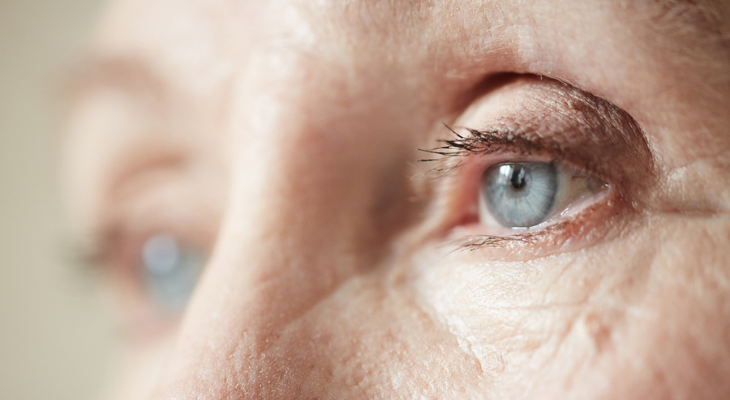
Protect Your Eyes for Life
Eye diseases and damage caused by the sun could affect your vision as you get older. Luckily, making a few changes now can help you safeguard your eyesight. Healthy Aging Month in September is the perfect time to try a few of these eye-friendly tips.
Keep Your Weight Under Control
Being overweight or obese increases your risk of type 2 diabetes, a disease that affects every part of your body, including your eyes. If diabetes isn't controlled properly, you could develop a condition called diabetic retinopathy. Leaky blood vessels and abnormal new blood vessels in your eyes blur your vision and may cause permanent vision loss when you have diabetic retinopathy.
Extra pounds also raise your risk for developing cataracts. Cataracts occur when the clear lens inside your eye becomes cloudy. The lens helps focus light rays on the retina, the light-sensing cells at the back of the eye.
Researchers who conducted a systematic review published in Optometry and Vision Science discovered that obesity increased the risk of a nuclear cataract by 12%, a cortical cataract by 34% and a posterior subcapsular cataract by 52%. A nuclear cataract forms in the center of the lens, while a posterior subcapsular cataract develops in the back of the lens. Cortical cataracts start as streaks in the outer edges of the lens, then gradually extend inward.
Choose Healthy Foods
Although a slice of birthday cake or the occasional handful of potato chips won't hurt your eyes, it's best to limit treats, junk food, fried foods and processed foods. When you shop, fill your grocery cart with whole grains, fresh fruits and vegetables, lean meats and poultry, fish, low-fat dairy products and healthy fats.
While you're in the produce aisle, look for kale, carrots, broccoli, spinach, red peppers, sweet potatoes, strawberries and kiwi. These fruits and vegetables contain vitamins and anti-oxidants essential for good eye health.
Lower Your Blood Pressure
Uncontrolled high blood pressure eventually damages your blood vessels, including the vessels in the eyes. Called hypertensive retinopathy, the condition can cause blurry or double vision and vision loss.
Don't Forget Your Sunglasses
Sunglasses protect your eyes from the damaging effects of ultraviolet A (UVA) and ultraviolet B (UVB) rays. If you don't wear sunglasses year-round, you may increase your risk of cataracts, skin cancer on your eyelids or around your eyes, growths on the eye and age-related macular degeneration (AMD).
AMD affects the macula in the center part of your retina. As the cells in the macular deteriorate, you may notice blurred central vision or blind spots in your vision. AMD is the most common cause of vision loss in people 60 and older, according to the Bright Focus Foundation.
The type of sunglasses you buy can affect your risk of sun-related eye diseases, as some lenses don't offer enough protection from the sun. Check the tag the next time you shop for sunglasses. If the lenses don't block 99 to 100% of UVA and UVB rays, keep shopping.
Stop Smoking
Need another reason to quit smoking? The habit can raise your risk of several eye conditions and diseases. People who smoke are more likely to develop dry eye, cataracts, age-related macular degeneration, optic nerve issues and uveitis, a painful inflammation that affects the middle layer of the eye, according to the American Academy of Ophthalmology.
If you're a smoker and have diabetes or thyroid disease, you may be at increased risk for diabetic retinopathy or Grave's eye disease.
Schedule Annual Visits with Your Eye Doctor
Eye disease can sneak up on you. Unfortunately, by the time you notice a change in your vision, vision loss may be permanent. During your annual visit, your eye doctor looks for subtle changes in your eyes that could be early signs of an eye disease or condition. If you are diagnosed with an eye disease, early treatment could help minimize its effects on your vision.
Ready to schedule an appointment with the optometrist? Contact our office to arrange your visit.
Sources:
Bright Focus Foundation: Age-Related Macular Degeneration: Facts & Figures, 7/13/2021
National Institute on Aging: Aging and Your Eyes, 7/28/2021
Optometry and Vision Science: Overweight, Obesity, and Age-Related Cataract: A Meta-Analysis, 5/2014
American Academy of Ophthalmology: Smoking and Eye Disease, 3/4/2022
American Optometric Association: Senior Vision: Over 60 Years of Age
